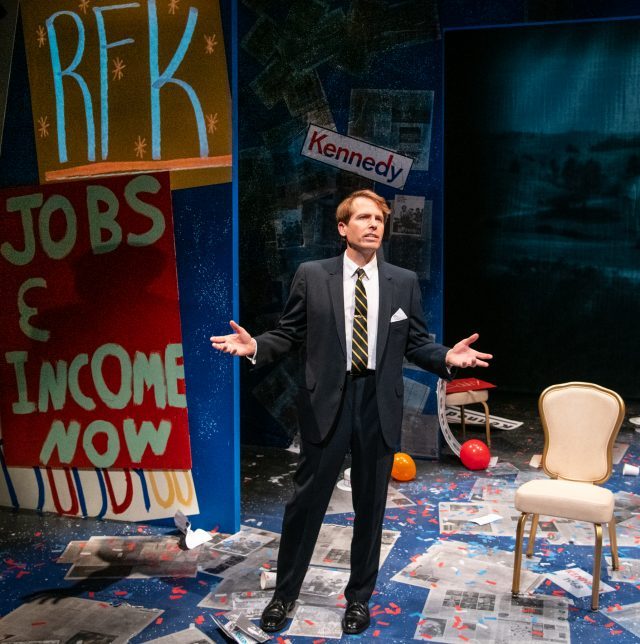
Michel Simon has loads of fun as a somewhat decrepit first mate in Jean Vigo’s classic L’Atalante
L’ATALANTE (Jean Vigo, 1934)
Film Forum
209 West Houston St.
September 21 – October 2
212-727-8110
filmforum.org
 French auteur Jean Vigo made only three shorts and one feature before his death from tuberculosis and leukemia in 1934 at the age of twenty-nine, but his wide-ranging legacy continues. Film Forum pays tribute to his lasting influence on cinema with “The Complete Jean Vigo,” new 4K restorations of all of his works in addition to a new bonus. In Vigo’s fourth and final film, L’Atalante, his only feature, Swiss actor Michel Simon is spectacularly hilarious as an aging, somewhat decrepit first mate with a peculiar lust for life and cats. After barge captain Jean (Jean Dasté) and Juliette (Dita Parlo) get married in her small, tight-knit country town, they head for the big city of Paris on the long boat, L’Atalante, that he captains as his job. First mate Père Jules (Simon) and his young cabin boy (Louis Lefebvre) come along for the would-be honeymoon, attempting to make sure it’s a smooth ride, which of course it’s not. Juliette wants to enjoy the Parisian nightlife, Jean is a jealous, overprotective stick-in-the-mud, and Père Jules — well, Père Jules is downright unpredictable, pretty much all id, living life footloose and fancy free even if he doesn’t have much money or many true friends. When a love-struck bicycle-riding peddler (Gilles Margaritis) tries to woo Juliette, Jean grows angry, and an emotional and psychological battle ensues. But through it all, Père Jules just keeps on keepin’ on, never getting too concerned, confident that everything will work out in the end, because that’s what happens in life.
French auteur Jean Vigo made only three shorts and one feature before his death from tuberculosis and leukemia in 1934 at the age of twenty-nine, but his wide-ranging legacy continues. Film Forum pays tribute to his lasting influence on cinema with “The Complete Jean Vigo,” new 4K restorations of all of his works in addition to a new bonus. In Vigo’s fourth and final film, L’Atalante, his only feature, Swiss actor Michel Simon is spectacularly hilarious as an aging, somewhat decrepit first mate with a peculiar lust for life and cats. After barge captain Jean (Jean Dasté) and Juliette (Dita Parlo) get married in her small, tight-knit country town, they head for the big city of Paris on the long boat, L’Atalante, that he captains as his job. First mate Père Jules (Simon) and his young cabin boy (Louis Lefebvre) come along for the would-be honeymoon, attempting to make sure it’s a smooth ride, which of course it’s not. Juliette wants to enjoy the Parisian nightlife, Jean is a jealous, overprotective stick-in-the-mud, and Père Jules — well, Père Jules is downright unpredictable, pretty much all id, living life footloose and fancy free even if he doesn’t have much money or many true friends. When a love-struck bicycle-riding peddler (Gilles Margaritis) tries to woo Juliette, Jean grows angry, and an emotional and psychological battle ensues. But through it all, Père Jules just keeps on keepin’ on, never getting too concerned, confident that everything will work out in the end, because that’s what happens in life.

Film Forum honors Jean Vigo with 4K restorations of all four of his works, along with a bonus
The son of anarchist Miguel Almereyda, who chose his last name because it is an anagram of the French phrase for “there is shit,” Vigo had been labeled a subversive for his first film, the twenty-five-minute À propos de Nice, and his third, the forty-one-minute Zéro de conduite (Zero for Conduct), had been banned. So he went a little more conventional, at least for him, with L’Atalante, rewriting with Albert Riéra an original script by Jean Guinée. The film is an insightful tale of love and romance, of wealth and poverty, of hard social conditions, focusing on a wacky man who has experienced a lot in his life, even though he looks like a bum, reminiscent of Simon’s brilliant portrayal of Priape in Jean Renoir’s Boudu Saved from Drowning. Whether putting on a puppet show, displaying his tattoos, getting his fortune read, or walking around with cats on his shoulders, Père Jules is one of the most endearing and memorable characters in the history of cinema, a unique figure who surprises over and over again, and Simon’s portrayal is just amazing; it’s hard to believe that he was only thirty-nine when he made the picture.
The highly poetic film, featuring a lovely score by Maurice Jaubert, also echoes F. W. Murnau’s Sunrise: A Song of Two Humans, only from a comic, often slapstick angle. After shooting was completed, Vigo’s already failing health took a turn for the worse, and a battle ensued over final cut involving the producers and editor Louis Chavance and cinematographer Boris Kaufman (Dziga Vertov’s brother, who went on to shoot such American classics as On the Waterfront and 12 Angry Men). Vigo died only a few weeks after L’Atalante was released. Film Forum is showing the restored director’s cut of L’Atalante from September 21 to October 2, along with “Vigo x 3,” consisting of À propos de Nice, the short documentary Jean Taris, and the restored director’s cut of Zéro de conduite. In addition, on September 30, Film Forum is screening Tournage d’hiver (Winter Shooting), a 2017 compilation of rushes and outtakes from L’Atalante and Zéro de conduite, narrated by film critic and historian Bernard Eisenschitz, who oversaw the restoration of L’Atalante.








 French auteur Jean Vigo made only three shorts and one feature before his death from tuberculosis and leukemia in 1934 at the age of twenty-nine, but his wide-ranging legacy continues. Film Forum pays tribute to his lasting influence on cinema with “The Complete Jean Vigo,” new 4K restorations of all of his works in addition to a new bonus. In Vigo’s fourth and final film, L’Atalante, his only feature, Swiss actor Michel Simon is spectacularly hilarious as an aging, somewhat decrepit first mate with a peculiar lust for life and cats. After barge captain Jean (Jean Dasté) and Juliette (Dita Parlo) get married in her small, tight-knit country town, they head for the big city of Paris on the long boat, L’Atalante, that he captains as his job. First mate Père Jules (Simon) and his young cabin boy (Louis Lefebvre) come along for the would-be honeymoon, attempting to make sure it’s a smooth ride, which of course it’s not. Juliette wants to enjoy the Parisian nightlife, Jean is a jealous, overprotective stick-in-the-mud, and Père Jules — well, Père Jules is downright unpredictable, pretty much all id, living life footloose and fancy free even if he doesn’t have much money or many true friends. When a love-struck bicycle-riding peddler (Gilles Margaritis) tries to woo Juliette, Jean grows angry, and an emotional and psychological battle ensues. But through it all, Père Jules just keeps on keepin’ on, never getting too concerned, confident that everything will work out in the end, because that’s what happens in life.
French auteur Jean Vigo made only three shorts and one feature before his death from tuberculosis and leukemia in 1934 at the age of twenty-nine, but his wide-ranging legacy continues. Film Forum pays tribute to his lasting influence on cinema with “The Complete Jean Vigo,” new 4K restorations of all of his works in addition to a new bonus. In Vigo’s fourth and final film, L’Atalante, his only feature, Swiss actor Michel Simon is spectacularly hilarious as an aging, somewhat decrepit first mate with a peculiar lust for life and cats. After barge captain Jean (Jean Dasté) and Juliette (Dita Parlo) get married in her small, tight-knit country town, they head for the big city of Paris on the long boat, L’Atalante, that he captains as his job. First mate Père Jules (Simon) and his young cabin boy (Louis Lefebvre) come along for the would-be honeymoon, attempting to make sure it’s a smooth ride, which of course it’s not. Juliette wants to enjoy the Parisian nightlife, Jean is a jealous, overprotective stick-in-the-mud, and Père Jules — well, Père Jules is downright unpredictable, pretty much all id, living life footloose and fancy free even if he doesn’t have much money or many true friends. When a love-struck bicycle-riding peddler (Gilles Margaritis) tries to woo Juliette, Jean grows angry, and an emotional and psychological battle ensues. But through it all, Père Jules just keeps on keepin’ on, never getting too concerned, confident that everything will work out in the end, because that’s what happens in life. 
